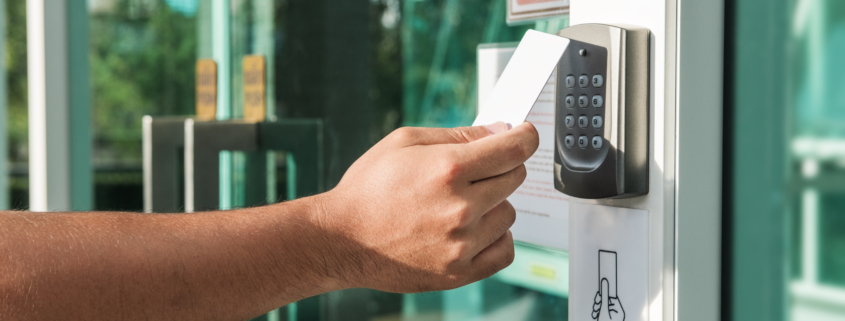If you have an Access Control System that uses cards and readers – you need to read this quick blog about the newer technology available –
In the world of access control systems, security is paramount. As technology continues to advance, it’s crucial for organizations to stay ahead of potential vulnerabilities and threats. When it comes to choosing between different access control reader technologies, the decision can have a significant impact on the overall security of your facility. In this blog, we’ll explore why a SEOS reader offers better security than a 26-bit Wiegand reader and provide you with five compelling reasons to consider this upgrade.
Enhanced Encryption and Authentication:
One of the fundamental differences between SEOS (Secure Identity Object) readers and 26-bit Wiegand readers lies in their approach to encryption and authentication. SEOS readers utilize advanced encryption techniques to protect communication between the reader and the access control system. This level of encryption ensures that sensitive data, such as card credentials and user information, remains secure and cannot be easily intercepted or duplicated.
In contrast, 26-bit Wiegand readers rely on a less secure protocol, making them susceptible to cloning and replay attacks. Attackers can capture card data from these readers and potentially gain unauthorized access to a facility. SEOS readers, with their robust encryption, significantly reduce this risk.
Two-Factor Authentication (2FA):
SEOS readers support advanced authentication methods, including two-factor authentication (2FA). With 2FA, users must provide two forms of verification before gaining access, adding an extra layer of security. This can involve something they know (e.g., a PIN) and something they have (e.g., a smart card or mobile device with a digital credential). This added security measure makes it much more challenging for unauthorized individuals to breach your access control system. 26-bit Wiegand readers lack the capability to implement 2FA effectively, leaving your system vulnerable to credential theft or compromise.
Mobile Credential Integration:
SEOS readers are designed with modern access control trends in mind. They seamlessly integrate with mobile credential solutions, allowing users to access facilities using their smartphones or wearable devices. Mobile credentials are more secure than traditional access cards because they are tied to unique digital keys and can be remotely disabled or updated in the event of a security breach. On the other hand, 26-bit Wiegand readers often lack support for mobile credential integration, limiting your options for adopting the latest security technologies.
Credential Lifecycle Management:
SEOS readers offer robust credential lifecycle management capabilities. This means that administrators can easily revoke, reissue, or update access privileges when necessary. If a card is lost or compromised, it can be quickly deactivated, minimizing the security risk. Additionally, SEOS readers can provide detailed access logs and reporting, helping organizations monitor and audit access activity effectively. With 26-bit Wiegand readers, managing credential lifecycles can be more cumbersome, leading to potential security gaps if lost cards are not quickly invalidated.
Secure Over-the-Air Updates:
SEOS readers can receive secure over-the-air updates, ensuring that your access control system remains up-to-date with the latest security patches and features. This proactive approach to system maintenance helps protect against known vulnerabilities and evolving threats. 26-bit Wiegand readers often require manual updates, which can be time-consuming and leave your system exposed to known vulnerabilities until updates are applied.
In conclusion, the choice between a SEOS reader and a 26-bit Wiegand reader has significant implications for the security of your access control system. SEOS readers offer enhanced encryption, support for 2FA and mobile credentials, robust credential management, and the ability to receive secure updates, all of which contribute to a more secure access control environment. As security threats continue to evolve, investing in the latest access control technology, such as SEOS readers, is a proactive step to safeguarding your organization’s assets and personnel. If you have an access control system and are curious to know if you have outdated technology – just reach out to HS Technology Group and we would be happy to test your current system to see if a simple upgrade is needed. In most cases we’re able to utilize most of the system in place.






